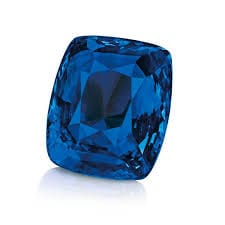
Australian Sapphires are found in multiple locations across the country. The New England region of New South Wales, particularly around Inverell and Glen Innes, is a significant source of these gemstones.
This is Australia’s most prolific sapphire region and contains numerous designated spots.
| Location | Specific Public Areas/Access | Key Finds |
| Inverell (The Sapphire City) | Staggy Creek Fossicking Area: Free public spot (search for sapphires, zircon, and tin). | Blue sapphires, zircons, tin. |
| Billabong Blue Sapphire Fossicking Park: A privately owned park that offers creek fossicking for a fee. (Call ahead for bookings/open status) | Sapphires, sometimes pink sapphires. | |
| Glen Innes (Glen Innes Highlands) | Yarrow Creek Bridge (at Pinkett) | Topaz, garnet, zircon, and sapphires. |
| Sara River Bridge (at Kookabookra) | Topaz, quartz, crystals, and sapphires (500m area west of the bridge). | |
| Mann River Bridge (west side of the bridge) | Sapphires and zircons. | |
| Torrington State Recreation Area: Fossicking is allowed in designated parts (like Ugly Corner Falls or Blatherarm Campground) with a Forestry Corporation permit (required for State Forests). | Beryl, topaz, wolframite, and occasionally sapphires. |
2. Central Tablelands Region (Closer to Sydney)
This area, west of the Blue Mountains, offers several accessible spots.
| Location | Specific Public Areas/Access | Key Finds |
| Oberon | Little River Fossicking Reserve (Porters Retreat) | Sapphires & zircons. |
| Sapphire Bend (in the Vulcan State Forest area) | Sapphires, zircons & occasional industrial diamonds. | |
| Campbell’s River Bridge Reserve (Campbells River Causeway) | Sapphires, zircon & gold. |
3. Southern NSW
| Location | Specific Public Areas/Access | Key Finds |
| Grabben Gullen (near Crookwell) | Grabben Gullen Creek: Widely recognised as yielding sapphires. Turn off Sapphire Road at the bridge. | Blue, green, red, and yellow sapphires, and other semi-precious stones. |
Important Fossicking Rules in NSW
- License/Permit: You do NOT need a fossicking license for most public land (like designated public reserves or river banks).
- State Forests: You MUST have a permit from the NSW Forestry Corporation to fossick in a State Forest (e.g., in some areas around Oberon or Torrington).
- Private Property: You MUST obtain consent from the landholder before stepping onto private property.
- Equipment: You are only allowed to use hand-held implements (shovel, pick, sieve, bucket). Mechanically powered equipment is NOT permitted for recreational fossicking.
- Check Locally: Always check with the local Visitor Information Centre in the town you plan to visit (Inverell, Glen Innes, Oberon) for current maps, local tips, and any necessary contact details or closures.
The Central Queensland Gemfields, including Anakie, Rubyvale, Sapphire, the Willows, and Glenalva, are also notable for their sapphire deposits.
Discover the Rich History of Sapphire Mining in Inverell and Glen Innes
Explore the captivating legacy of sapphire mining nestled in the picturesque highland regions of the Great Dividing Range, specifically in the New England Districts of Inverell and Glen Innes. Delve into the allure of the renowned New England gemfield’s famous blue sapphire, coveted for its mesmerizing beauty and rich history.
Unveiling the Gems of the Region
Sapphire and corundum deposits adorn the landscape along the east coast of Australia, but it is within the heart of Inverell and Glen Innes where these treasures truly flourish. The Reddestone Creek, Kings Plain Creek, Wellingrove Creek, Frazers Creek, Horse Gully, and Swanbrook stand as testament to the region’s rich geological endowment.
A Glimpse into the Past
Step back in time to 1919 when commercial sapphire mining first took root near Inverell on Frazers Creek, igniting a fervor that saw the rise of over 100 sapphire mines during the booming 1970s. However, the subsequent decades bore witness to the ebb and flow of sapphire fortunes, from the heights of prosperity to the challenges of economic downturns.
Inverell: The Sapphire City
Inverell stands as a testament to the enduring legacy of sapphire mining, earning its moniker as the ‘Sapphire City’ for its profound contributions to Australia’s gemstone heritage. From the discovery of diamonds at Copes Creek in 1875 to the modern-day allure of sapphire fossicking, Inverell remains a beacon for gem enthusiasts worldwide.
Embark on a Fossicker’s Paradise
Join the ranks of eager fossickers drawn to the allure of the famed royal blue sapphire, scattered along the banks of Reddestone Creek and beyond. Explore enchanting sites like Boolabinda, Bullock Mountain Homestead, and Three Waters High Country Holidays, where the thrill of discovery awaits.
Experience the Magic of Inverell and Glen Innes
Immerse yourself in the timeless charm of Inverell and Glen Innes, where the echoes of sapphire miners past blend harmoniously with the tranquility of the present. Whether you seek adventure or serenity, the allure of sapphire mining country beckons, promising a journey unlike any other.
In addition to these, the most significant occurrence of ruby is near Gloucester, near Mount Barrington, an old volcano. Rubies have also been found near the Macquarie and Cudgegong Rivers and near Tumbarumba.
Commercial mining of corundum (including sapphire and ruby) still occurs at the Anakie and Lava Plains placer deposits in Queensland, and the New England area of New South Wales. Open pit mining is used to extract the corundum ore from the gravels. In many cases, the mining operations are small and the pits quite shallow. Tools used might include jack hammers, excavators, or shovels.
It’s worth noting that in the 1980s, Australia was the source for about 70% of the world’s sapphires, mostly from New South Wales. However, mining with machines became more common in other countries, so Australia’s share of the market dropped to about 20-30%.
Learn about Australian volcanoes and their role in gemstone formation
